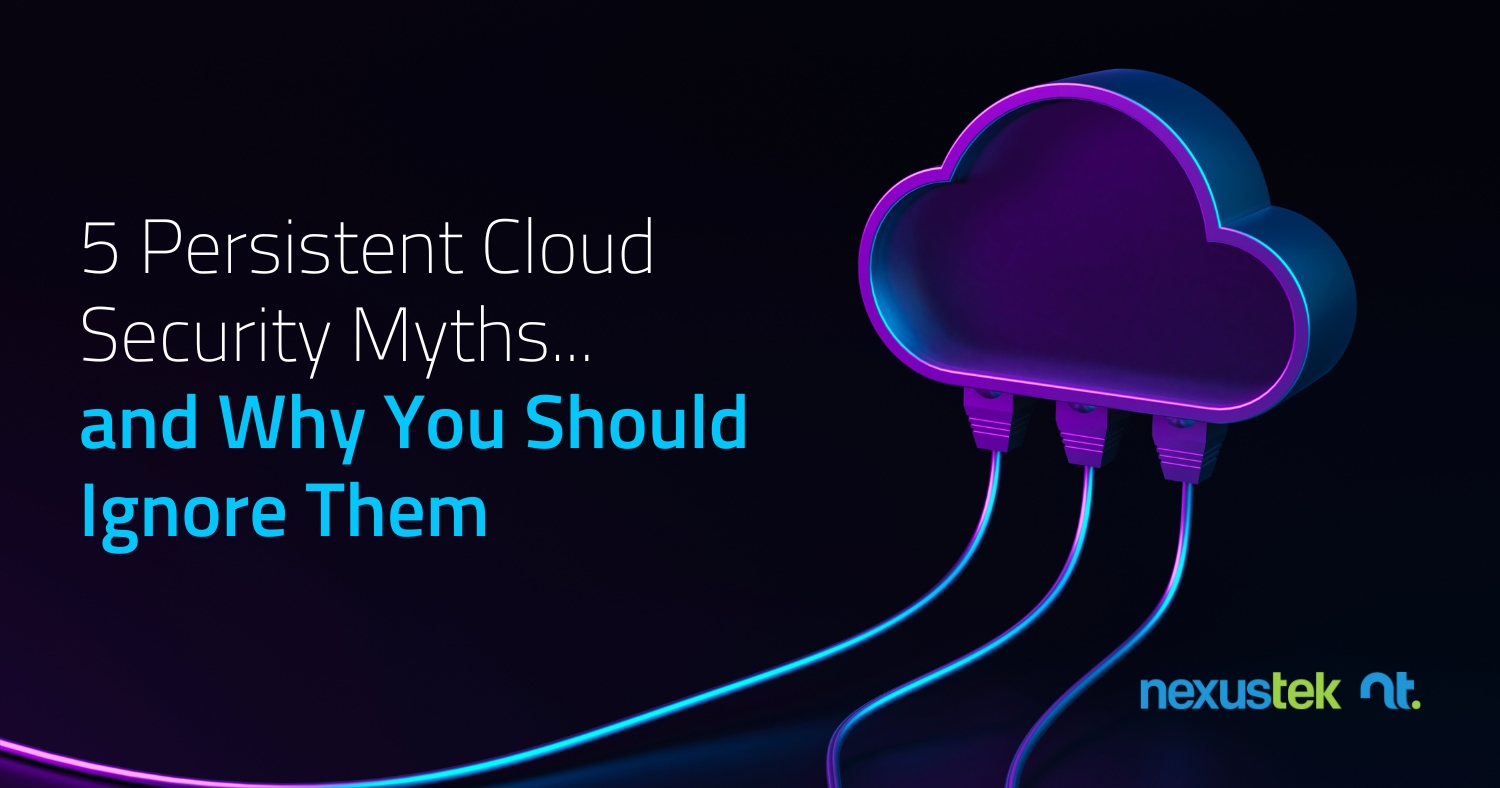READ TIME: 4 MIN

5 Persistent Cloud Security Myths…and Why You Should Ignore Them
Since the early days of the cloud, myths have abounded. Cloud security, in particular, is often misunderstood. To clear up the confusion, we will “bust” 5 common myths about cloud security.
Myth 1:
Cloud Providers Automatically Include Security
One common myth is that cloud providers like Azure or AWS automatically come with full security. Cloud providers often do provide a secure infrastructure, but it is the customers’ responsibility to institute cybersecurity solutions to secure their own data within the cloud. This can include everything from setting up firewalls to establishing access controls, to bringing in an external cybersecurity provider.
Myth 2:
The Cloud Is Less Secure Than On-Premises
Another persistent myth is that on-premises infrastructure is inherently more secure than cloud-based environments. The truth is that cloud providers invest heavily in cybersecurity of multiple forms. They also have dedicated security teams whose entire function is to protect their infrastructure. It is common for cloud providers to have more resources to invest in security than individual businesses.
Myth 3:
Data Stored in the Cloud Is Always Secure
Another problematic misperception is that data is automatically secure once it’s in the cloud. Data security is complex. It depends on various factors like how it’s configured, who has access, and what security measures are in place. Businesses need to deploy their own security controls on top of the cloud provider’s infrastructure.
Myth 4:
Public Cloud Has Weak Security
Some people grow concerned about public cloud infrastructure when they learn that it involves multi-tenancy, or sharing the same physical infrastructure with other users. But multi-tenancy is not inherently risky. Cloud providers can isolate one customer’s data and resources so that they are not accessible to other users. This is generally as secure as on-premises infrastructure, if not more so.
Myth 5:
Cloud Environments Are Not Compliant
This myth has some basis in fact, as some cloud environments do not meet compliance requirements (e.g., HIPAA, GDPR, etc.). However, it is possible for cloud environments to be secured to meet stringent compliance requirements. It is important to find a cloud provider that understands your compliance requirements and is prepared to document data privacy and security conditions as required by your industry’s standards.
NexusTek provides compliance assessments, cloud hosting services in both single- and multi-tenant environments, and cybersecurity services and solutions to keep your cloud-based workloads secure.
Interested in learning more about cloud-based security? Talk with a cloud security expert today.






